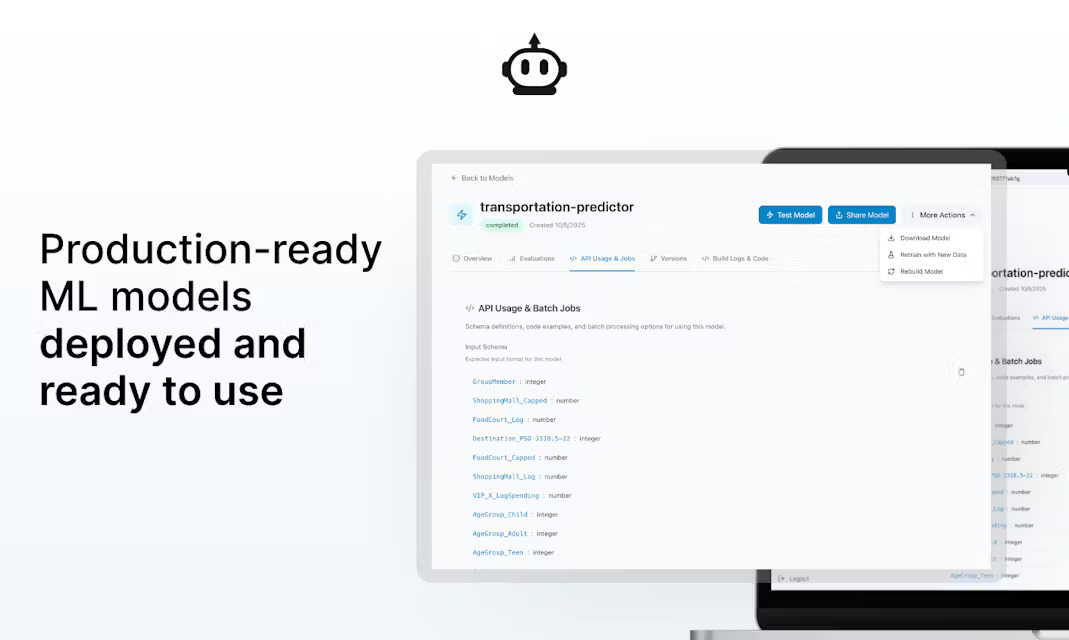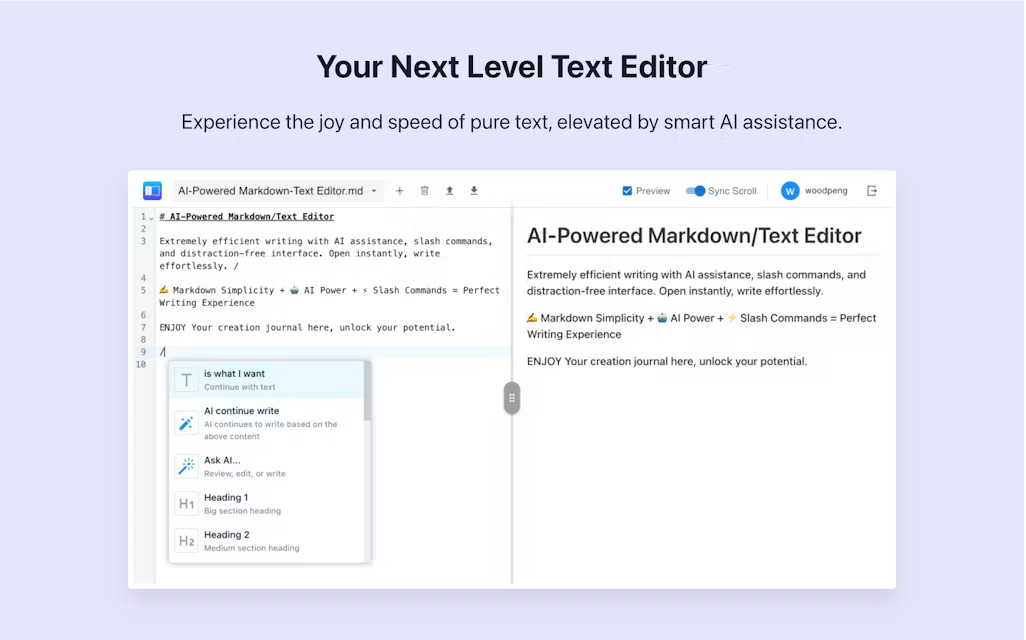- AI Breakfast
- Posts
- Is OpenAI Developing A Music Generator?
Is OpenAI Developing A Music Generator?
Good morning. It’s Monday, October 27th.
On this day in tech history: In 1994, Intel and Nestor Corp introduced the Ni1000, the first all-digital neural-network chip designed for image analysis, capable of processing 40,000 pattern recognitions per second using over 3 million transistors.
In today’s email:
OpenAI Developing Music Generator?
Gemini’s Visual Layout Feature
5 New AI Tools
Latest AI Research Papers
You read. We listen. Let us know what you think by replying to this email.
Introducing the first AI-native CRM
Connect your email, and you’ll instantly get a CRM with enriched customer insights and a platform that grows with your business.
With AI at the core, Attio lets you:
Prospect and route leads with research agents
Get real-time insights during customer calls
Build powerful automations for your complex workflows
Join industry leaders like Granola, Taskrabbit, Flatfile and more.

Today’s trending AI news stories
OpenAI developing AI music generator as Altman questions what counts as ‘real work’
OpenAI is reportedly building a generative music model that can compose or enhance tracks from text or audio prompts, marking its most ambitious creative push since 2020’s Jukebox. The system can generate full compositions or add specific instrumental layers, like guitar or percussion, based on user direction.
To refine musical structure and phrasing, OpenAI has enlisted Juilliard students to annotate sheet music used in training. The model draws on prior breakthroughs in text-to-speech and sound synthesis and could be integrated into ChatGPT or Sora’s media pipeline.
Speaking with Rowan Cheung at DevDay, Altman said work soon to be overtaken by AI isn’t “real work.” He argued that technological progress continually redefines what counts as valuable effort: “A farmer 50 years ago would look at what you and I do and say, ‘that’s not real work.’ Altman’s comment, both fatalistic and forward-looking, suggested that AI might erase millions of jobs yet also create new, less tangible forms of productivity.
Valthos builds next-generation biodefense.
Of all AI applications, biotechnology has the highest upside and most catastrophic downside. Heroes at the frontlines of biodefense are working every day to protect the world against the worst case. But the pace of biotech is against
— Valthos (@ValthosTech)
1:36 PM • Oct 24, 2025
The company’s Startup Fund also recently backed Valthos, a biodefense venture using machine learning to detect pathogens and update vaccines in real time. Founded by former Palantir and Oxford researchers, Valthos claims its models can compress response times from months to hours, an advance OpenAI calls vital for “national resilience.” Read more.
First look at Google’s Gemini Visual Layout feature where AI responses turn into live dashboards
Google’s upcoming Gemini Visual Layout could be the most visible leap yet. Instead of static text, you’ll get a modular feed of cards packed with tables, sliders, and interactive visuals. It feels more like a live dashboard than a chat window. It’s a shot across the bow of OpenAI’s Pulse and a signal that Google wants Gemini to handle serious workflow logic before its long-awaited “Agent Mode” automates execution.
BREAKING 🚨: Google is gearing up to release the Visual Layout feature on Gemini. Visual Layout can synthesise an interactive layout to represent information on a given topic.
Gemini Pulse 👀
— TestingCatalog News 🗞 (@testingcatalog)
1:40 PM • Oct 25, 2025
Over at DeepMind, the new Dreamer 4 agent is teaching itself to think in worlds that don’t exist. It learns entirely inside a simulated “world model,” predicting what would happen instead of trying things for real. It trained on Minecraft gameplay videos and became the first AI to mine diamonds without ever playing the game. A transformer core predicts actions and rewards, while a “shortcut forcing” technique makes generation 25 times faster than conventional video-based learning. DeepMind says that same tech could help train robots safely in simulation before they ever touch hardware.
Google’s physical world ambitions are just as bold. The company is backing a 400-megawatt carbon-capture power plant in Illinois to power its data centers while trapping up to 90 percent of its emissions. It’s a big bet on a technology that’s still hit-or-miss, and one that critics say can’t offset the methane leaks that come with burning natural gas.
Everyone is going to be able to vibe code video games by the end of 2025
— Logan Kilpatrick (@OfficialLoganK)
11:09 PM • Oct 25, 2025
And in a sign of where this is heading, Google’s own AI team is teasing a future where coding feels more like collaboration than syntax. Developers may soon “vibe code,” describing video games and tools in natural language while AI builds them in real time. Read more.
Researchers pinpoint three keys to making AI agents far smarter
Researchers from the National University of Singapore, Princeton, and Illinois Urbana-Champaign have identified three key levers that make AI agents significantly smarter: data quality, algorithm design, and reasoning style. Their findings show that a well-trained 4-billion-parameter model can match or even outperform competitors with up to 32 billion parameters, highlighting that training strategy can outweigh sheer scale.

The team broke down what makes AI agents excel by analyzing the impact of data quality (left), training algorithms (middle), and reasoning modes (right). | Image: Yu et al
Data quality proved critical. Models trained on authentic, continuous learning trajectories captured full reasoning workflows, including planning, guided execution, error correction, and tool integration, while those trained on synthetic data underperformed by a wide margin. Algorithm design also made a difference: token-level scoring combined with broader exploration and optimized rewards (GRPO-TCR) improved both stability and accuracy compared with conventional reinforcement learning approaches.

Training with real, continuous learning data leads to significantly higher accuracy than synthetic alternatives. | Image: Yu et al.
Finally, reasoning strategy mattered: deliberative models that plan actions carefully outperformed reactive models that rely on fast, repeated tool calls. The resulting DemyAgent-4B achieved competitive results across math, science, and coding benchmarks. Both the model and training datasets are publicly available. Read more.

Microsoft Outlook is getting an AI overhaul under new leaders
Your LinkedIn activity could soon train its AI, unless you opt out by November 3
Dropbox rolls out Dash, an AI assistant that actually understands your files
Bonsai Robotics’ new Amiga vehicles use vision-based AI to make farms fully autonomous
Carnegie Mellon built a drone that 3D-prints structures from text prompts
AI models can learn a writer’s voice from just two books. Even experts can’t tell the difference
Study finds AI chatbots cite obscure websites that never make Google’s top results
Misleading claims that most web content is now AI-generated are spreading on social media
AI policy without proof is just politics, says Berkeley professor calling for independent oversight
Inside Ring-1T: Ant engineers solve reinforcement learning bottlenecks at trillion scale
Trump and Xi to finalize TikTok pact, marking a truce in the global AI race
Elon Musk says he won’t build Tesla’s ‘robot army’ unless he keeps control of it
The impact of AI on the future job market may include some 'transitional friction'
AI models may be developing their own ‘survival drive’, researchers say

5 new AI-powered tools from around the web

arXiv is a free online library where researchers share pre-publication papers.

Thank you for reading today’s edition.

Your feedback is valuable. Respond to this email and tell us how you think we could add more value to this newsletter.
Interested in reaching smart readers like you? To become an AI Breakfast sponsor, reply to this email or DM us on 𝕏!





.jpg)